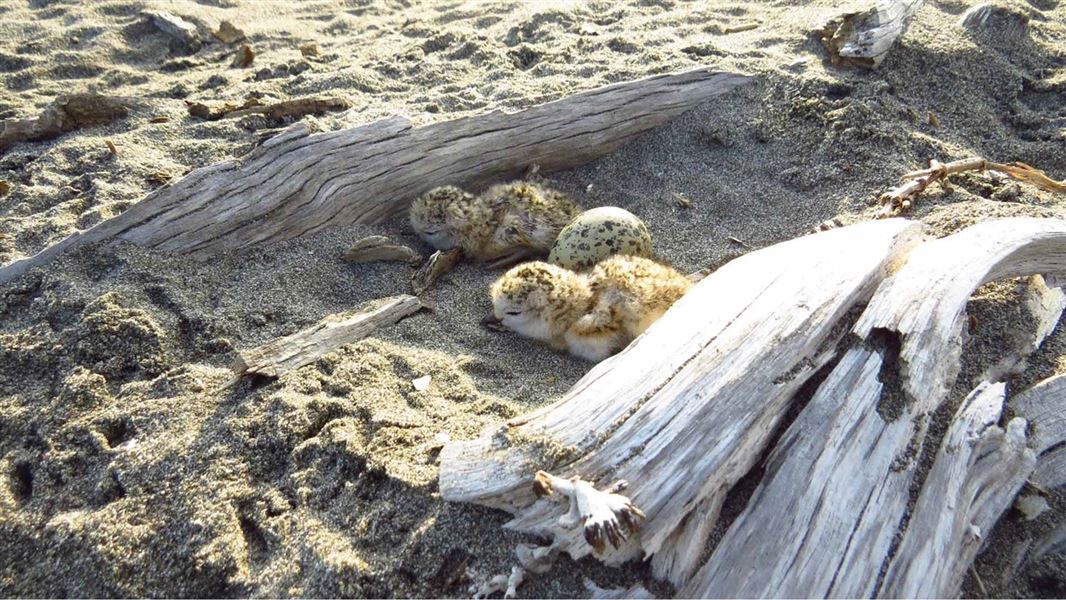
Introduction
Spring is here and shorebirds like our northern NZ dotterels, banded dotterels and variable oystercatchers are starting to nest on our beaches.Date: 06 October 2020
Shorebird populations are vulnerable to disturbance, predation and natural events and without conservation action may be threatened with extinction, says DOC Biodiversity Ranger Mithuna Sothieson.
“Here in the eastern Bay of Plenty, we are lucky to have dedicated volunteers and community groups working hard to protect these iconic birds of our beaches by undertaking year-round pest control at nesting sites.”
This work helps increase the survival of shorebird eggs and chicks against introduced predators such as rats, weasels, stoats and hedgehogs.
Known nesting sites are signposted and fenced temporarily from September – March in order to protect nests and chicks from human-induced disturbance.
In the eastern Bay of Plenty this includes Waiaua, Waioeka and Waiotahe sandspits in Opotiki, sandspits and islands around Ōhiwa Harbour, Ōpihi Whanaungakore (at the Whakatane river mouth) and at stream mouths along the Matata straights, Mithuna says.
“But we need your help too to ensure that our local populations continue to persist into the future. You can help by keeping below the high tide mark at nesting sites.”
Most NZ dotterel nesting sites are restricted to vehicle and dog access under local Council bylaws.
“Please ensure you adhere to these restrictions to protect shorebirds at these sites. If you do come across a distressed bird on the beach – often noted as being very vocal, running away and displaying a ‘broken wing’, please walk away from the area as the shorebird is most likely protecting a nest or young.”
Mithuna says storms, king tides and beach erosion over the winter months have resulted in reduced nesting space available for them at some sites.
“This means it is more important than ever to share our beaches with our native birds and keep an eye out for them over the summer months.
“Let’s give our threatened shorebirds a fighting chance this breeding season.”
Contact
For media enquiries contact:
Email: media@doc.govt.nz